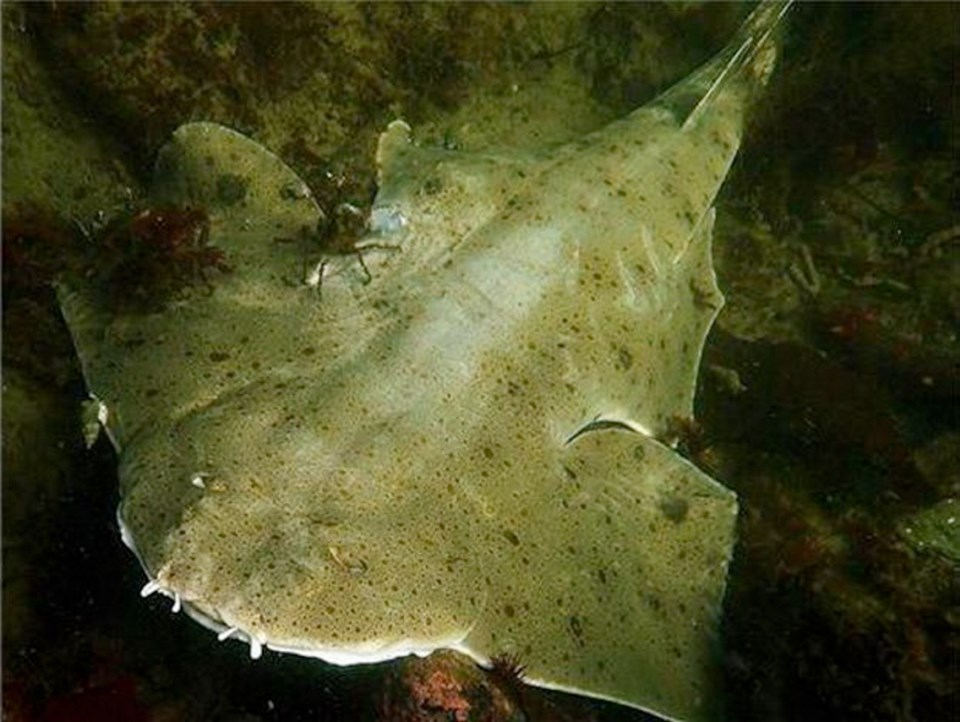Mark Cantwell had anticipated another enjoyable day of free-dive snorkelling off Victoria’s Clover Point, photographing sea urchins and other common marine life.
What the Environment Canada policy adviser got was the experience of a lifetime — a close encounter with a species never before documented in B.C. waters, the Pacific angel shark.
Cantwell was swimming near the shore in his wetsuit on April 30 when another diver, Henry Fisher, reported spotting an unidentifiable creature on the ocean bottom, about 10 metres down.
“We both went down and I didn’t know what it was,” he said. “It looked like a skate, triangular and so forth.”
Cantwell took photos, which he posted to a local snorkelling website.
It didn’t take long before someone suggested it was a rare Pacific angel shark. Fisheries and Oceans Canada soon confirmed it as the first official sighting of the species in B.C. waters.
“I look into it more and the first thing I see is a YouTube video of a guy being attacked by an angel shark,” Cantwell said. “The thing I learned is that they lay in the sand and remain immobile … until something swims by its mouth and then it strikes.
“I’m glad I didn’t get any closer than two or three feet.”
Cantwell has served 27 years with Environment Canada, much of that as a meteorologist, and is interested to know whether the species has been in B.C. waters all along and went undiscovered until now or whether it is evidence of bigger changes underway in the Pacific Ocean.
“The question becomes: Is it a species this far north because of climate change and El Niño?” he said. “That’s the story I’m interested inconveying.”
Jackie King, a federal research scientist based at the Pacific Biological Station in Nanaimo, confirmed that angel sharks have not been reported from B.C.
There are numerous online references to the sharks being found from Alaska to the Gulf of California and even parts of South America, but King is aware of only one reported sighting off southeastern Alaska in 1907.
Another was reported in Puget Sound in Washington state in 1932.
The shark is so unusual looking that false sightings are unlikely.
“Sightings are extremely rare, but can happen,” King said. While the shark is not migratory, it is possible that warmer conditions are pushing the species farther north.
Officially, 14 species of sharks have been documented in B.C. waters.
According to the Monterey Bay Aquarium in California, angel sharks grow to about 1.5 metres and eat small fish and molluscs.
The sharks spend their days buried in the sand, perfectly camouflaged by their grey, brown and black colourings. “When an unsuspecting fish comes near, the shark lunges upward, sucks the fish into its huge mouth and swallows it whole,” the aquarium says.
Some sharks, such as hammerheads, must swim to breathe. Angel sharks have muscles that pump water over their gills and through spiracles (holes) in their heads, allowing them to “snooze quietly on the bottom or wait in ambush for prey without moving,” the aquarium says.
Due to overfishing into the 1980s, populations decreased in California, according to the aquarium. Now there are limits on the minimum catch size, and gillnet fishing is banned with five kilometres of shore. The population is thought to be rebounding.
The International Union for Conservation of Nature rates the angel shark as “near threatened.”



